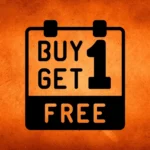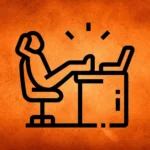Aggressive marketing uses bold tactics to grab attention and drive quick sales. It focuses on frequent promotions, competitive pricing, and direct outreach to create urgency.
Statistics show that Cadbury achieved a 40% growth in sales through aggressive marketing strategies.
While it brings quick results, aggressive marketing can frustrate consumers if overused. Finding the right balance is important for long-term success.
When done right, aggressive marketing helps you grow quickly, but it must be used carefully to protect your brand and keep customers loyal.
In this guide, I’ll cover all the main strategies and techniques with examples. So let’s get started,
What is Aggressive Marketing
Aggressive marketing is about using bold and direct tactics to grab attention and drive quick sales. It’s all about getting people to notice you and act fast.
Unlike passive marketing, which just provides information and waits for action, aggressive marketing uses bold tactics to grab attention and prompt immediate responses.
Here are three examples of aggressive marketing in different industries:
- Restaurant: Offering limited-time discounts or “buy one, get one free” deals to get more customers in during slow hours.
- Retail Shop: Using flash sales or deep discounts on high-demand products to create urgency and attract a crowd.
- Hotel: Running last-minute booking promotions with reduced prices to fill up rooms during off-peak seasons.
These strategies aim to create a sense of urgency and push customers to act quickly, boosting sales and foot traffic.
Key points of Aggressive Marketing
Here are some more key points about aggressive marketing that you can find useful:
- High-Pressure Tactics: You might use limited-time offers or create a sense of urgency with countdowns or exclusive deals to encourage quick purchases.
- Direct and Persistent Outreach: You could contact potential customers through phone calls, emails, or even direct mail, keeping the conversation frequent and consistent.
- Focus on Sales Conversion: Instead of focusing on building long-term relationships, you prioritize closing sales right away to meet short-term goals.
- Emotional Appeals: Using strong emotions—like fear of missing out or the thrill of a great deal—can motivate customers to make quick decisions.
- Increased Frequency: Repeating the same message through multiple channels ensures that you stay top of mind and push consumers toward action.
- Discounts and Promotions: Offering frequent discounts, flash sales, or “buy one, get one” deals can push customers to act quickly before they miss out.
Benefits of Aggressive Marketing
Here are some personalized benefits of aggressive marketing::
- Quick Sales Boost: You can see a rapid increase in sales by driving immediate action, thanks to limited-time offers and frequent promotions.
- Increased Brand Visibility: By being highly visible through constant ads, emails, and outreach, your brand stays top of mind for consumers.
- Market Share Growth: Aggressive marketing helps you capture market share quickly, especially in competitive industries, by attracting attention before competitors.
- Customer Urgency: Creating a sense of urgency in your campaigns makes customers act fast, leading to higher conversion rates and faster sales cycles.
- Strong Consumer Engagement: By using emotional appeals and direct outreach, you can foster a stronger connection with potential customers, pushing them to engage with your brand.
- Short-Term Results: If you need to see fast results for your business, aggressive marketing tactics deliver measurable success quickly, helping you hit your goals.
Aggressive Marketing Strategies:
- Marketing Warfare: You might use your competitor’s weaknesses or mistakes to create buzz around your brand. A clever attack or parody could draw attention to your business and make consumers choose you instead.
- Competitive Pricing: If you’re looking to gain attention quickly, offering lower prices than your competitors can make your products stand out. It’s about being the go-to choice for budget-conscious customers.
- Targeted Advertising: By identifying the right group of people, you can make your ads directly appeal to those most likely to make a purchase. This ensures you’re not just casting a wide net, but speaking directly to the right audience.
- Guerrilla Marketing: Using creative, unconventional methods like surprise street art or flash mobs to get people talking about your brand. It’s all about making a memorable impact without spending big money.
- Push Strategy: You could take a more direct approach by actively pushing your product through heavy ads, promotional emails, or in-person pitches. The idea is to constantly remind potential customers to act quickly and make a purchase.
- Aggressive Selling: This involves using techniques like “the majority is right” to make customers feel they should buy because everyone else is doing it. Social proof can push people to make quick buying decisions.
- Urgency Creation: You might create urgency by emphasizing that products are in limited stock or that a deal will expire soon. This tactic can make customers act impulsively, rather than waiting.
- Loyalty Program Overload: Offering rewards or points for immediate purchases, extra benefits for quick sign-ups, or for buying in bulk. This tactic ensures that customers feel incentivized to buy more, faster.
- FOMO (Fear of Missing Out): Tapping into your customers’ fear of missing out can drive them to buy right away. You might advertise exclusive offers that are available for a limited time, making them feel like they’ll lose out if they don’t act fast.
- Remarketing: By targeting customers who have already interacted with your brand (like browsing your website or cart), you can remind them of your product and push them to complete the purchase with a time-sensitive offer or discount.
Aggressive Marketing Techniques
- Influencer Partnerships: You could build relationships with influencers who have strong followings in your niche. Their endorsement or promotion can skyrocket your brand’s visibility, driving immediate attention and trust.
- Pop-Up Promotions: Sometimes, simple techniques like pop-up ads on your website, or offering a deal when customers leave their cart, can immediately catch attention and boost conversions.
- Referral Marketing: Encouraging current customers to refer friends or family with discounts or rewards can create a chain of fast customers, all motivated by the promise of savings or exclusive benefits.
- Event-Based Promotions: Hosting flash sales or limited-time events, whether online or offline, can stir excitement. The event will make people rush to buy, knowing they might miss out if they wait.
- Direct Outreach: You might want to go for the personal touch with cold calls or follow-up emails that push the consumer to make an immediate decision. This could work especially well in B2B marketing.
- Scarcity Tactics: Showcasing low stock levels on products or offering limited editions can encourage quick buying decisions. The fear of missing out on something exclusive can push people to act quickly.
- Sales Funnels: Setting up quick, efficient sales funnels that guide customers from awareness to conversion in a streamlined process can boost sales. Make sure the funnel includes clear CTAs and instant rewards.
- Flash Sales: Hosting flash sales, where the price drops dramatically for a short period, can create urgency and push people to buy right away, especially when you pair it with countdown timers.
- Social Media Blitz: You might create intense social media campaigns where you focus on a short-term promotion or contest that’s time-sensitive, flooding your platforms with high-frequency messages to grab attention.
- Doorbuster Deals: A popular technique in retail, doorbuster deals offer substantial discounts for a short window, often used during sales events like Black Friday, which immediately draws customers in.
These strategies and techniques are designed to create excitement, urgency, and a quick decision-making environment.
Potential Drawbacks of Aggressive Marketing
- Customer Burnout: You might overwhelm customers with constant ads, deals, or outreach, which can lead to frustration and them tuning out your brand completely. It’s important to find a balance so customers don’t feel bombarded.
- Reputation Damage: If your marketing feels too pushy or manipulative, it could damage your brand’s reputation. Customers might view your business as less trustworthy, which could impact long-term success.
- Decreased Brand Loyalty: Focusing only on short-term sales can make customers feel like they are just numbers, not valued, which can hurt their long-term relationship with your brand.
- Customer Churn: Aggressive marketing tactics can drive up short-term sales but also lead to a higher rate of customer churn. Customers might make a one-time purchase but not return if they feel the experience was too forceful.
- Legal Risks: Some aggressive tactics, like using deceptive advertising or creating false urgency, could potentially violate consumer protection laws. This can result in legal consequences or fines that damage your business.
- Negative Customer Perception: If you use aggressive tactics, customers might feel harassed or pressured. This can lead to dissatisfaction, a negative brand image, and potentially lost customers who may avoid your business in the future.
- Ethical Concerns: Some aggressive marketing strategies may involve manipulative tactics, like misleading urgency or exaggerated claims. These practices could cross ethical boundaries and even violate consumer protection regulations, which can harm your reputation.
- Short-Term Gains: While aggressive marketing can drive immediate sales and quick results, it often doesn’t focus on building lasting customer relationships. This could hurt your ability to foster long-term loyalty and trust.
Conclusion
In conclusion, aggressive marketing is a great way to quickly boost sales and grab attention. It creates urgency, encouraging customers to act fast and choose your brand.
When done right, aggressive marketing increases visibility and brings quick results, helping you stand out in a competitive market. It can also drive fast customer decisions.
While it’s important not to overwhelm customers, using aggressive tactics carefully can lead to success in the short term. It’s all about finding the right balance.
I recommend using aggressive marketing to get fast results, and pairing it with SEO and blog writing for long-term, organic growth.
** FAQs **
1. What are aggressive marketing strategies?
Aggressive marketing strategies involve using bold tactics to quickly capture attention and drive sales. These strategies include things like limited-time offers, competitive pricing, and push tactics to encourage immediate customer action.
2. What are some common aggressive marketing techniques?
Common aggressive marketing techniques include influencer partnerships, guerrilla marketing, and high-pressure selling. These methods aim to create urgency and push customers toward quick decisions, often generating immediate sales.
3. Can you provide some examples of aggressive marketing?
Examples of aggressive marketing include flash sales with countdown timers, direct email campaigns offering exclusive deals, and using scarcity tactics like “limited stock” or “only a few left” to drive quick purchasing decisions.
4. How do aggressive marketing strategies impact customer loyalty?
Aggressive marketing strategies can lead to immediate sales but may not always build long-term customer loyalty. While they drive fast results, they often need to be complemented by relationship-building tactics for sustained success.
5. Is aggressive marketing effective for all types of businesses?
Aggressive marketing can be effective, especially for businesses looking for quick results or trying to stand out in competitive markets. However, it’s important to tailor the strategies and techniques to your specific audience to avoid customer burnout or dissatisfaction.



